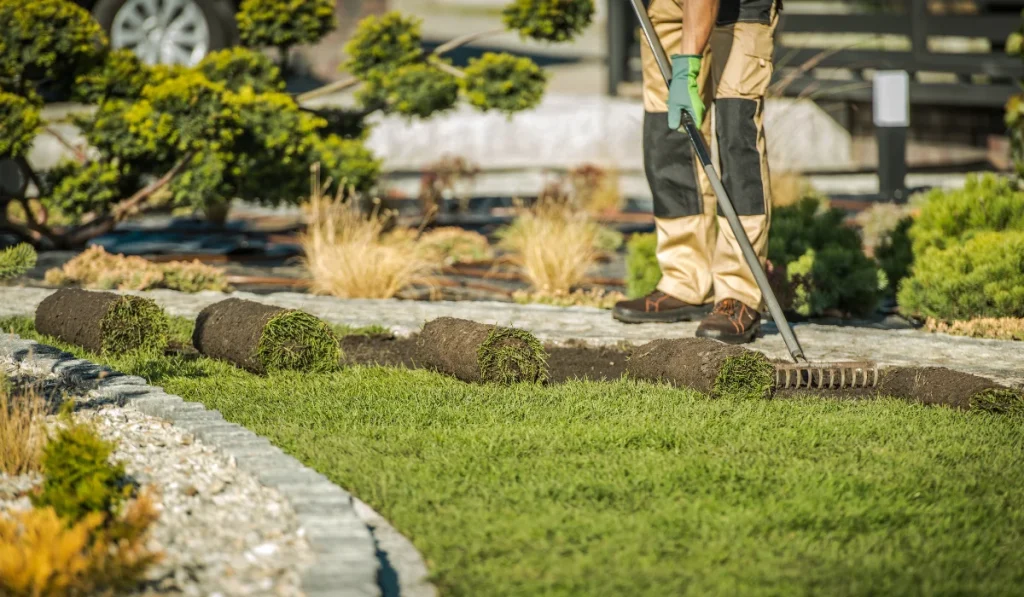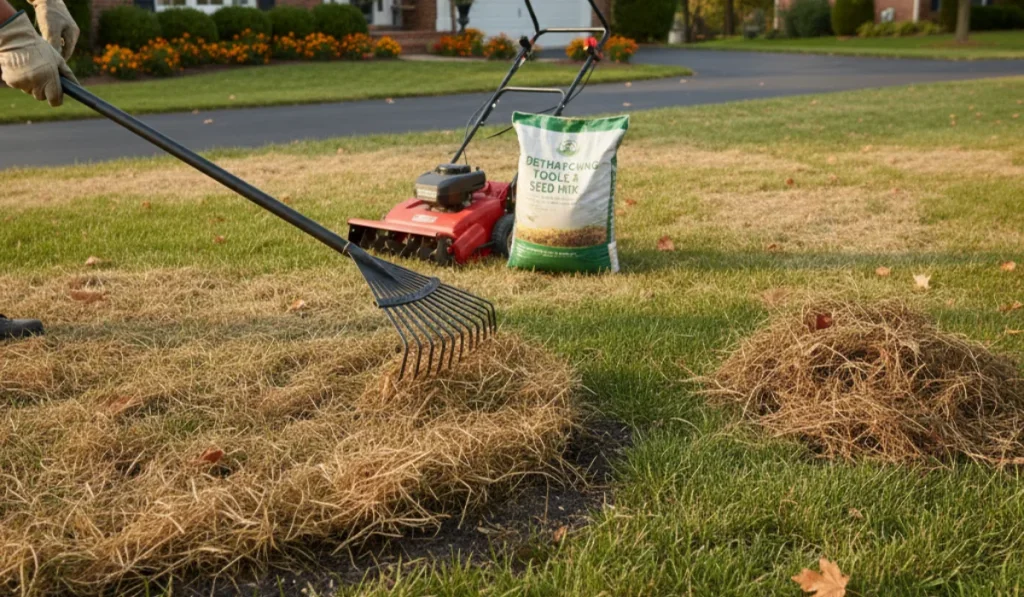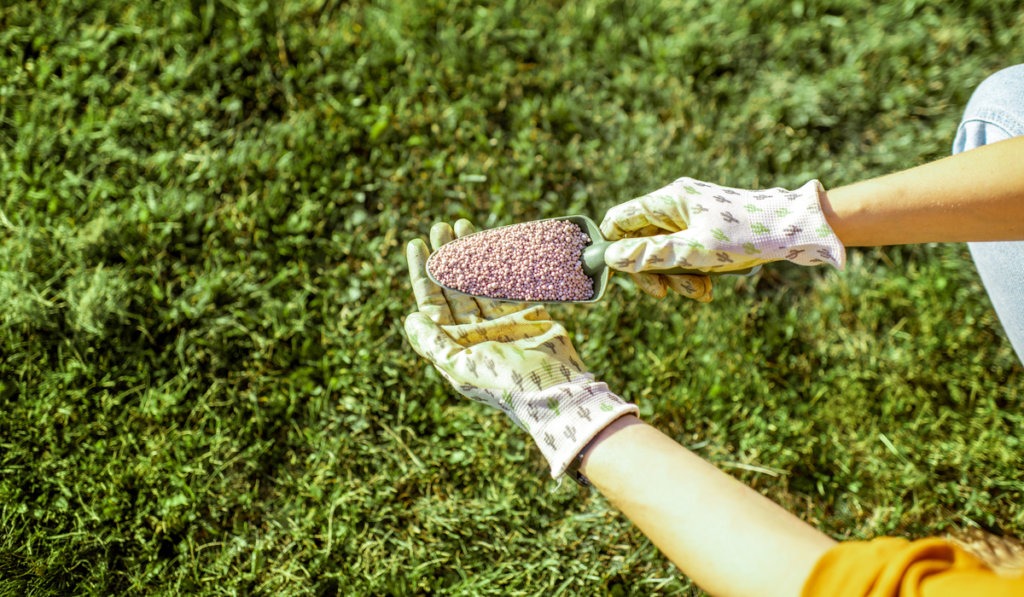When the August sun beats down and your lawn starts to fade, it’s tempting to grab the nearest bag of fertilizer. However, your lawn’s needs depend on the grass type, soil condition, and how it’s handled the summer heat so far. Choosing the right lawn fertilizer gives your yard a better chance to stay green now and green up quickly in the fall.
Whether you’re growing bermuda, fescue, bluegrass, or zoysia, this guide breaks down how to feed your grass the right way in late summer.
Key Takeaways
- Use slow-release fertilizers to prevent lawn burn and maintain steady nutrients.
- Choose fertilizers with potassium and phosphorus to strengthen roots and fight off drought stress.
- Feed warm-season turfgrass like Bermuda now, but hold back on cool-season grasses until early fall.
- Always apply fertilizer with a spreader, then water it in to prevent waste and activate nutrients.
Why August lawn care needs a different approach
August is a tough month for lawn care. Warm-season grasses like Bermuda and zoysia are still growing, but heat can slow them down. Cool-season grasses such as fescue and bluegrass often go into dormancy to survive the heat.
Helping your root system stay strong without pushing too much top growth is your top goal, no matter the grass type you’re working with. Choosing the right fertilizer can make that happen.
What to look for in an August lawn fertilizer
1. Go with slow-release, not quick hits
In the summer months, slow-release fertilizers work best. They feed your lawn over time without overloading it. Fast-release fertilizers can cause too much growth too quickly, especially during a heatwave.
Look for products labeled as granular fertilizers or ones that contain stabilized nitrogen.
2. Focus on potassium and phosphorus
These two nutrients are key in late summer. Potassium helps your grass handle heat, foot traffic, and dry spells. Phosphorus supports root growth and is especially helpful for a new lawn or recovering turf.
Before applying anything, consider doing a soil test. It helps you avoid overdoing it and wasting fertilizer.
3. Don’t forget micronutrients
Even if you’re using the right N-P-K mix, your lawn still needs micronutrients like iron or magnesium to stay healthy. They help maintain a deep green color and improve stress tolerance.
August fertilizer tips by grass type
Bermuda and Zoysia
These warm-season grasses thrive in the heat but still need support in August. Choose a balanced N-P-K fertilizer with extra potassium.
Tip: TifTuf Bermuda is a wise choice in California. It’s drought-tolerant and stays green with less water. One nitrogen fertilizer application in August is usually enough if your soil is healthy.
Fescue and Bluegrass
These cool-season grasses often slow down or go dormant in summer. Use a low-nitrogen blend to prep for overseeding or aerating in early fall. Excessive fertilizer application now can cause disease or weak growth.
New sod or seed
Just installed new lawn sod or grass seed? Skip the high-nitrogen fertilizers. Instead, use a starter fertilizer with phosphorus to help roots grow. Water regularly to help it take root, and follow your local watering schedule.
Best practices for August fertilizer application
- Always use a spreader to apply fertilizer evenly, then water the lawn to help nutrients soak in.
- Avoid fertilizing before rain, as heavy downpours can wash away the granules.
- Before you start, measure your lawn to apply the right amount, not too much, not too little. Tip from SodLawn: 1 pound per 100 sq feet is usually what’s needed.
Summer lawn care tips beyond fertilizer
Mowing
Keep your mower blades sharp and set the height a little higher in summer. Mowing your lawn using a higher setting gives you taller grass that shades the soil and retains moisture more effectively.
Weed control
Summer weeds like crabgrass love hot weather. If you’re adding weed control or a pre-emergent, wait a week after fertilizing. Never treat a lawn that looks stressed.
Aerate and overseed cool-season lawns
In cooler California regions, aerate and overseed late this month. Breaking up compact soil helps seedlings grow quickly and take root before fall.
Organic and alternative options
If you’re trying to reduce inputs or follow a DIY approach, consider using organic fertilizers. These usually release nutrients slowly and improve soil health over time. You can also try a liquid fertilizer for a faster green-up, but make sure it’s labeled for summer use and won’t overheat the lawn.
Some lawns may also benefit from occasional treatments with fungicide, especially if you’re seeing brown patches during hot, humid weather.
Final thoughts
Choosing the right lawn fertilizer now is a key part of smart summer lawn care. Whether you’re recovering from a tough season, preparing for fall, or helping a new lawn settle in, your grass will benefit from the right balance of nutrients.
If you’re unsure what your lawn needs, don’t guess. Run a soil test or reach out to your local extension office. And remember, what works in Redding may not be the same as what works in Riverside. Your climate and soil matter.
Our team at Sodlawn understands the unique fertilizer needs of every garden we work with.
Contact us today, and our expert team will be happy to assist you in choosing the correct fertilizer to nourish your lawn.
FAQs
What’s the best summer lawn fertilizer for Bermuda grass?
Use a slow-release fertilizer with a 3-1-2 ratio and added potassium. It builds strength without causing rapid growth in the heat.
Should I fertilize before or after mowing?
Always fertilize after mowing. That way, the fertilizer reaches the soil and won’t stick to clippings.
Can I use a Scotts fertilizer in August?
Yes, Scotts has summer lawn fertilizer blends made for hot weather. Check the label to match your grass type and climate.



